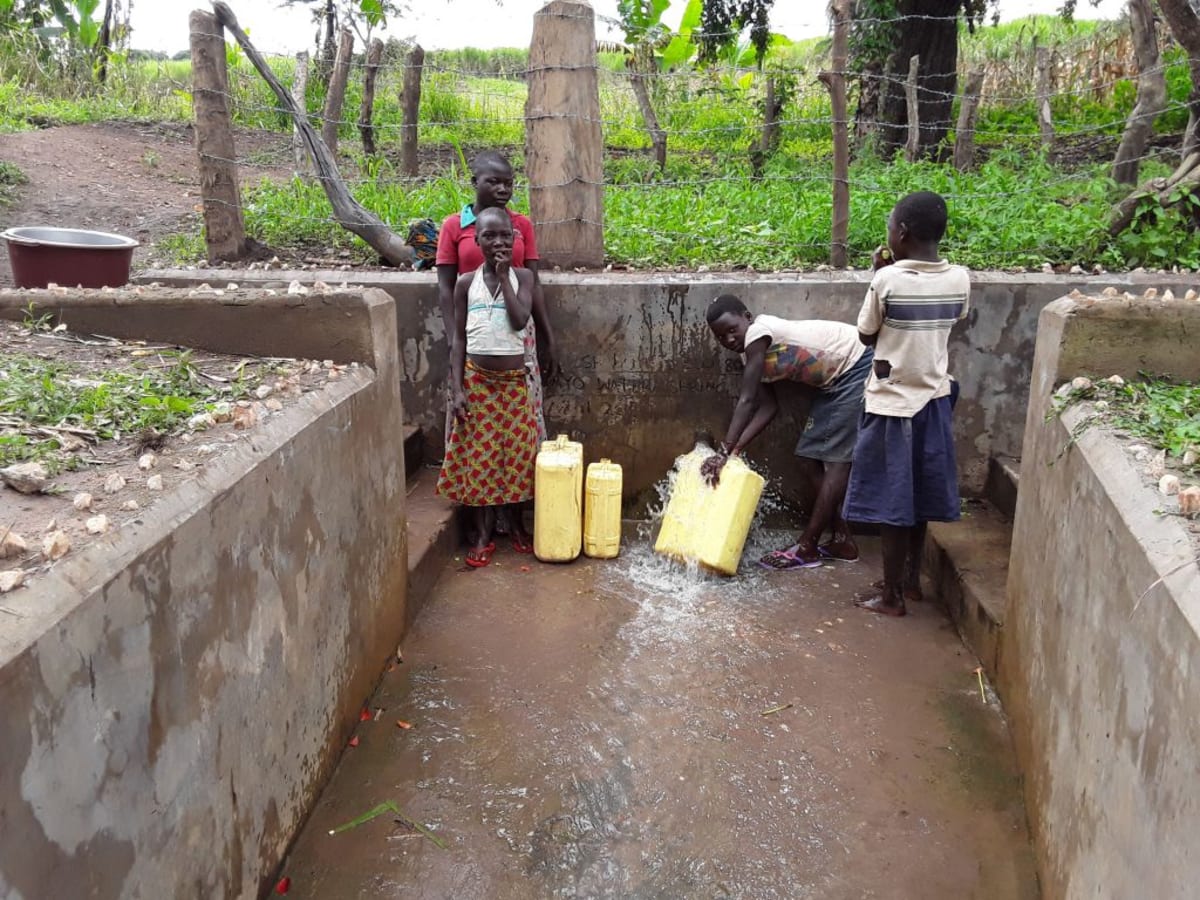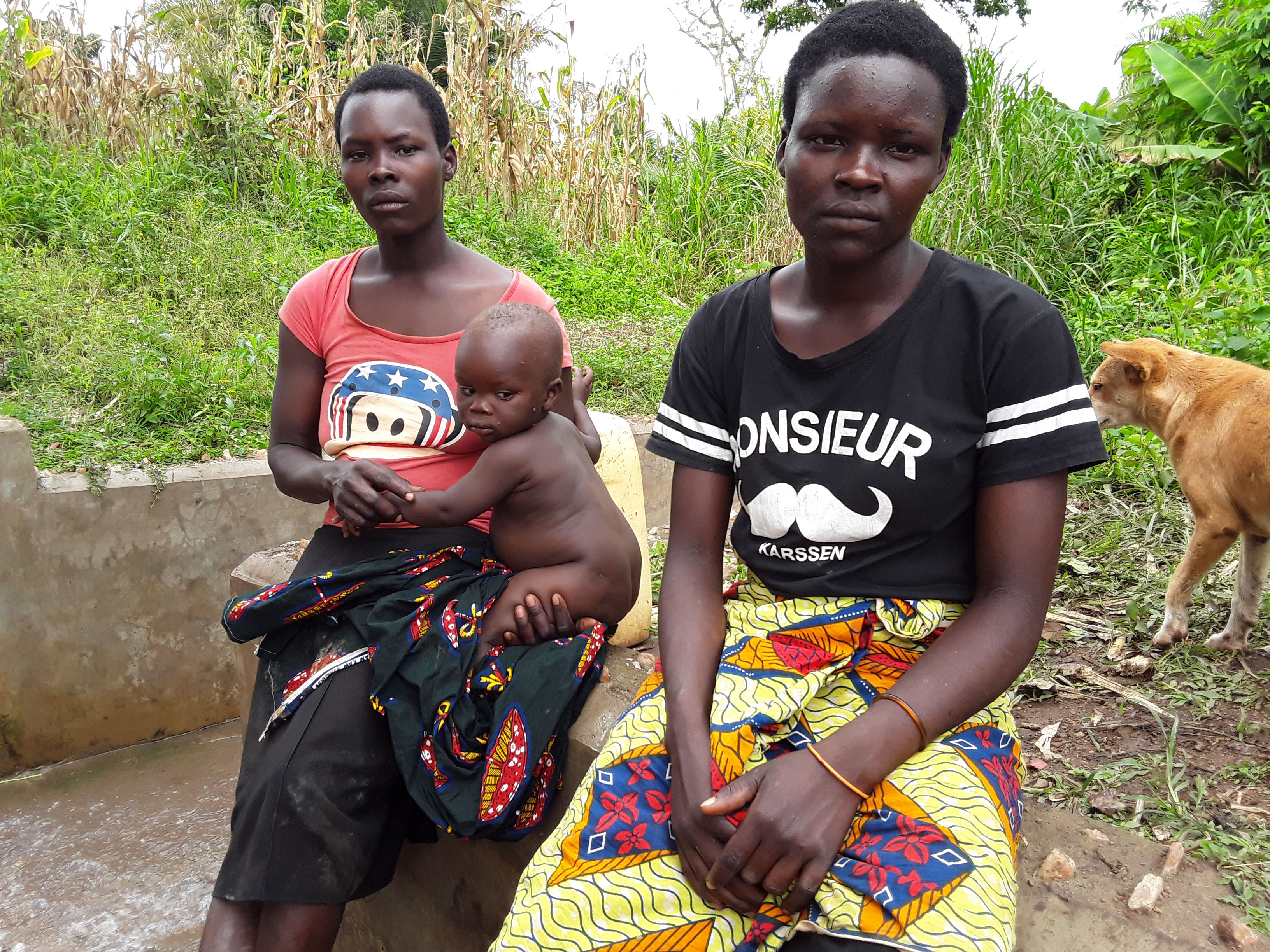We arrived in Rwempisi planning to give people water through a hand-dug well. After meeting families and touring the area, we realized that the issue here isn't a lack of water, but a lack of clean water. There is a spring that the community has used for years, and they have asked us to find a way to transform this reliable water source into a clean one.
Rwempisi is home to 195 people from around 39 different families. Most adults here specialize in growing sugarcane which is sold to the local Kinyara Sugar Factory. After spending most of the morning farming, women return home to take care of children as they get out of school. Men also choose to get out of the sun by meeting at the trading center to sell crops, repair bikes, or another of many other income-generating activities. Men remain at the center of town for the greater part of the afternoon into the evening, when they begin to play cards and socialize with friends. All this time, women are at home with the children preparing dinner, cleaning, and getting ready for the next school day.
Until this spring protection is installed, GPS coordinates are a rough estimate.
Water Situation
Water is fetched from a spring next to Rwempisi. Locals have relied on this source for years, wearing down the stone path that leads up to the spring. A board has been lain across the water to act as a bridge, on which women and children will balance on as they bend over to fill water buckets.
The spring is at the bottom of a hill and is visibly dirty. Leaves, garbage, and algae float on the surface. There is no proper drainage, and thus the water is murky most of the time. During the tour, our team member even noted that the water is smelly!
Drinking the spring's water may sate thirst for a time, but often comes with negative consequences. Diarrhea is a normal occurrence that affects all people, especially children.
Sanitation Situation
Less than half of the homes in Rwempisi have their own latrine. As we begin to construct the spring protection system, we will continue to encourage and help each family have their own latrine. Without good facilities, locals are forced to seek the privacy of bushes. The more waste there is on local land, the more likely a portion of this will end up in the spring (especially after rain).
Plans: Hygiene and Sanitation Training
Training’s main objectives are the use of latrines and observing proper hygiene practices, since these goals are inherently connected to the provision of clean water. Open defecation, water storage in unclean containers and the absence of hand-washing are all possible contaminants of a household water supply. Each participating village must achieve Open Defecation Free status (defined by one latrine per household), prior to the project installation.
This social program includes the assignment of one Community Development Officer (CDO) to each village. The CDO encourages each household to build an ideal homestead that includes: a latrine, hand-washing facility, a separate structure for animals, rubbish pit and drying rack for dishes.
We also implement the Community Led Total Sanitation (CLTS) approach with each of our village partners. This aims to improve the sanitation and hygiene practices and behaviors of a village. During these sessions, village leaders naturally emerge and push the community to realize that current practices of individual households – particularly the practice of open defecation– are not only unhealthy, but affect the entire village. CLTS facilitates a process in which community members realize the negative consequences of their current water, sanitation and hygiene behaviors and are inspired to take action. Group interactions are frequent motivators for individual households to: build latrines, use the latrines and demand that other households do the same.
Plans: Spring Protection
Over continued visits to the community, the viability of a hand-dug well diminished. Between sites for old latrines, new latrines, burial grounds, and ground composition, we just couldn't find a good construction site for a well that would yield safe, clean water.
Considering the convenience, reliability, and long history of this spring, the community has decided to unite with us to build a spring protection system for their current source. Once construction is completed, the spring will begin yielding clean drinking water.
Locals have already begun to gather the materials necessary for construction, such as sand and stone. There's a lot of work to be done: They will have to help our team clear the land around the spring, diverge the water, build a catchment area with walls allowing for discharge pipes and steps in and out, and dig drainage. Local families will host our spring protection artisans while they begin the sanitation improvements needed for a successful partnership. We all look forward to making these improvements together!

 Protected Spring
Protected Spring
 Rehabilitation Project
Rehabilitation Project




















